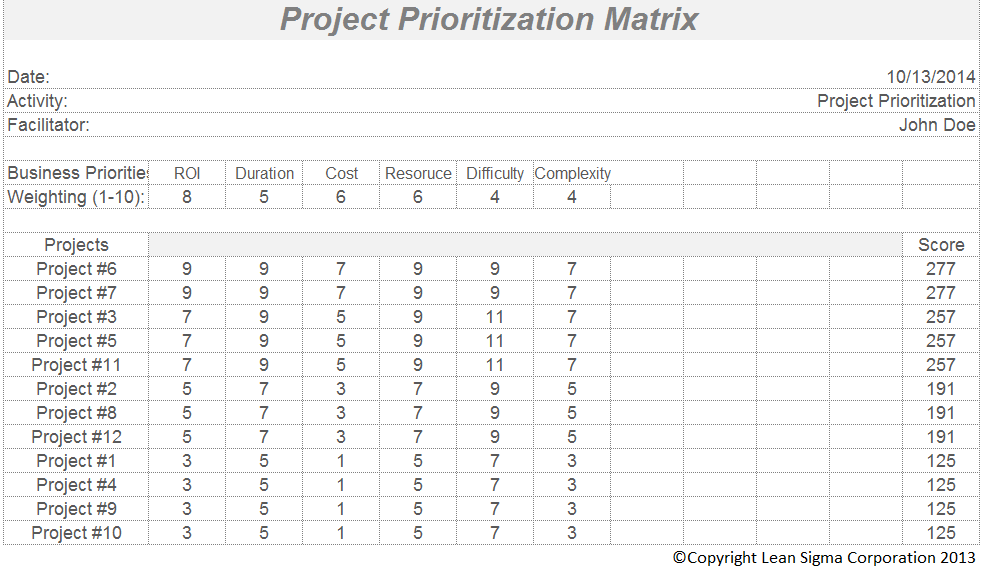Project Prioritization within Your Organization
When businesses create their three to five-year strategic vision, it is imperitive to perform project prioritization. More often than not, a list of projects is created to achieve the planned goals. This list of projects then needs to be prioritized in order for project teams to have a plan of action. As the organization begins assigning projects to their teams, many believe there is no method as to which projects come first. This, in fact, is not true. There is a significant amount of categorizing, grading, and comparison done to achieve project prioritization.
Who is Involved in Project Prioritization?
When organizations begin project prioritization, three groups should be involved – leadership, project managers, and subject matter experts. The reason for involvement from all three groups is that the knowledge and expertise that can be provided is imperative to understanding the needs of each project. Leadership will be able to classify projects as they are aligned with business objectives and the overall strategic vision, whereas subject matter experts will provide their knowledge of the subject to comment on the difficulty and intricacy of the project’s work. Project managers will be able to provide insight on workload, capabilities of resources, and estimations on completions for projects. The three groups together will create a complete picture of what will potentially be involved in the execution of each project.
Successful Prioritization
There are a handful of tools that assist organizations with prioritizing projects. The common thread in all of these tools is that they require the organization to put a value on the category of which objective the project helps reach and the actual goal of each project.
Initially, the three groups involved in prioritizing projects for the organization will need to choose categories in which the projects will be graded. These categories should be in line with strategic goals set by the organization, and may include, but are certainly not limited to, Return on Investment (ROI), estimated effort, cost, resource availability, and of course time. Each category will then be ordered by importance on a scale, usually one through ten. This ranking will allow for better prioritization abilities as projects are graded in each category. Once the categories have been rated based on relevance to the organization's strategic goals, projects are scored based on importance or difficulty in each category on a scale of one to nine.
An example of how a project would be graded within a category would be a company deciding that all projects that would produce $5 million in ROI are extremely important to the business’s objectives, and are to be given a grade of ten. Those projects that will produce $100,000 or less in ROI would be seen as less pivotal in reaching business objectives, and given a grade of one. Projects that fell between the $5 million and $100,000 mark would be graded as five or seven, based on their proximity to the upper and lower limits.
All projects in the organization’s portfolio would be graded as such within each category that was deemed important by the organization. At the end of this activity, an organization has a list of weighted grades for each project and can assess the order in which they are completed.

Figure 1.0 above is an example of a project prioritization matrix with dummy data provided to demonstrate its use relative to the process description already discussed. This template is available as an aid to help organizations accomplish project prioritization.
Project prioritization is a very important step for an organization in its effort to align its initiatives and coordinate improvements. Without understanding how each project ranks against the others, the task of implementing change through project work may be too daunting to be successful. By creating a list of prioritized projects, organizations can overcome this obstacle and work towards implementing successful projects that will help them meet their strategic objectives.




